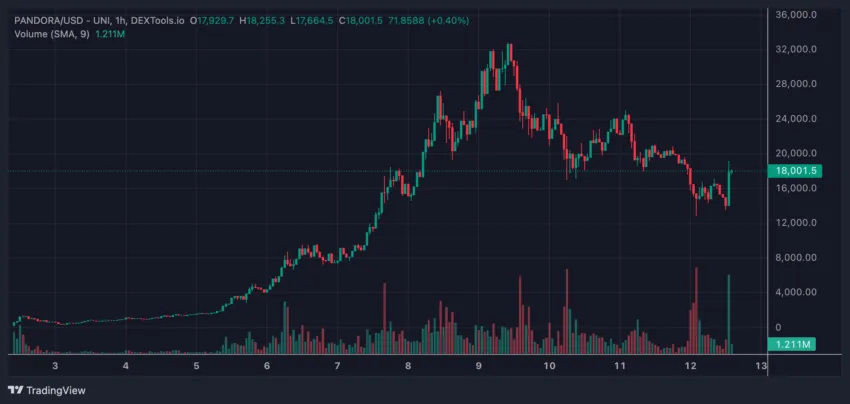The introduction of ERC-404 tokens, marked by the rapid decline of Pandora’s value by 40%, casts shadows on the future of this innovative standard. Critics point out the experimental aspect of ERC-404 and its vulnerability to exploitation, further exacerbated by the surge in Ethereum’s gas fees, casting shadows on its economic sense.
As the crypto sector’s newest buzzword, the ERC-404 token standard initially captured vast interest. This enthusiasm, however, has seen a notable decrease.
Pandora, the flagship token under this standard, experienced a dramatic 40% fall in its market value within a mere three days, sparking widespread speculation about the durability and prospects of ERC-404 tokens.

Is the Excitement Around ERC-404 Fading?
Pandora’s initial adoption of the ERC-404 framework led to an explosive 12,500% increase in value last week, merging ERC-20’s fungibility with the distinctiveness of NFTs. This groundbreaking model promised a new era of tokenization, with Pandora tokens reaching a peak price of $32,836.
However, this dramatic drop has led to a reevaluation of the long-term viability of ERC-404 tokens.
The ERC-404 standard, crafted by the enigmatic creators “ctrl” and “Acme,” is still in its experimental phase and hasn’t undergone thorough examination through the Ethereum Improvement Proposal process. Its innovative method challenges traditional NFT fractionalization by creating complete ERC-721 tokens from smaller ERC-20 portions.
Yet, this approach has not been without its detractors. Concerns have been raised regarding its practicality and the potential for system manipulation, with developer “quit” pointing out vulnerabilities that could allow for the exploitation of lending pools not designed for ERC-404, leading to possible system abuses.
Furthermore, the spike in Ethereum gas fees following ERC-404’s adoption raises additional barriers. The increase in transaction costs, due to the frequent burning and re-minting of NFTs on the Ethereum network, highlights potential inefficiencies in ERC-404’s design, prompting doubts about its financial viability in a fee-sensitive market.
“Handling an ERC-404 transfer requires 125,000 gas units, over three times more than a standard ERC-721 transfer, which is highly concerning,” stated Pop Punk, an X platform user.
Despite these hurdles, ERC-404 has intrigued many with its novel take on NFT fractionalization, enabling fractional token trades on decentralized exchanges and enhancing NFT liquidity.
This concept represented a significant shift in treating NFTs akin to conventional ERC-20 tokens. Nevertheless, the subsequent value plummet of Pandora and similar ERC-404 tokens like DeFrogs (DEFROGS) and Monarch (MNRCH) raises questions about the standard’s future acceptance and success within the cryptocurrency community.

